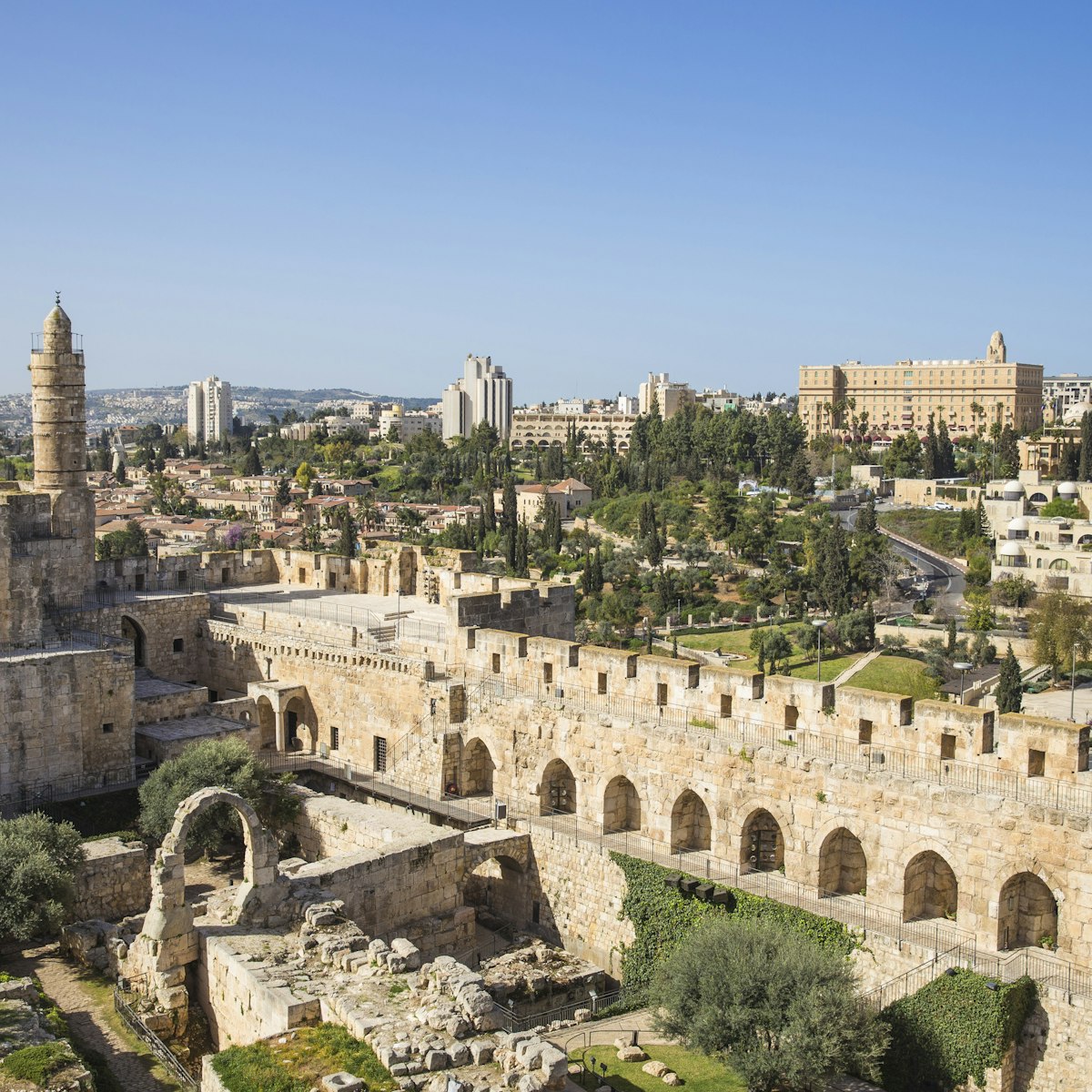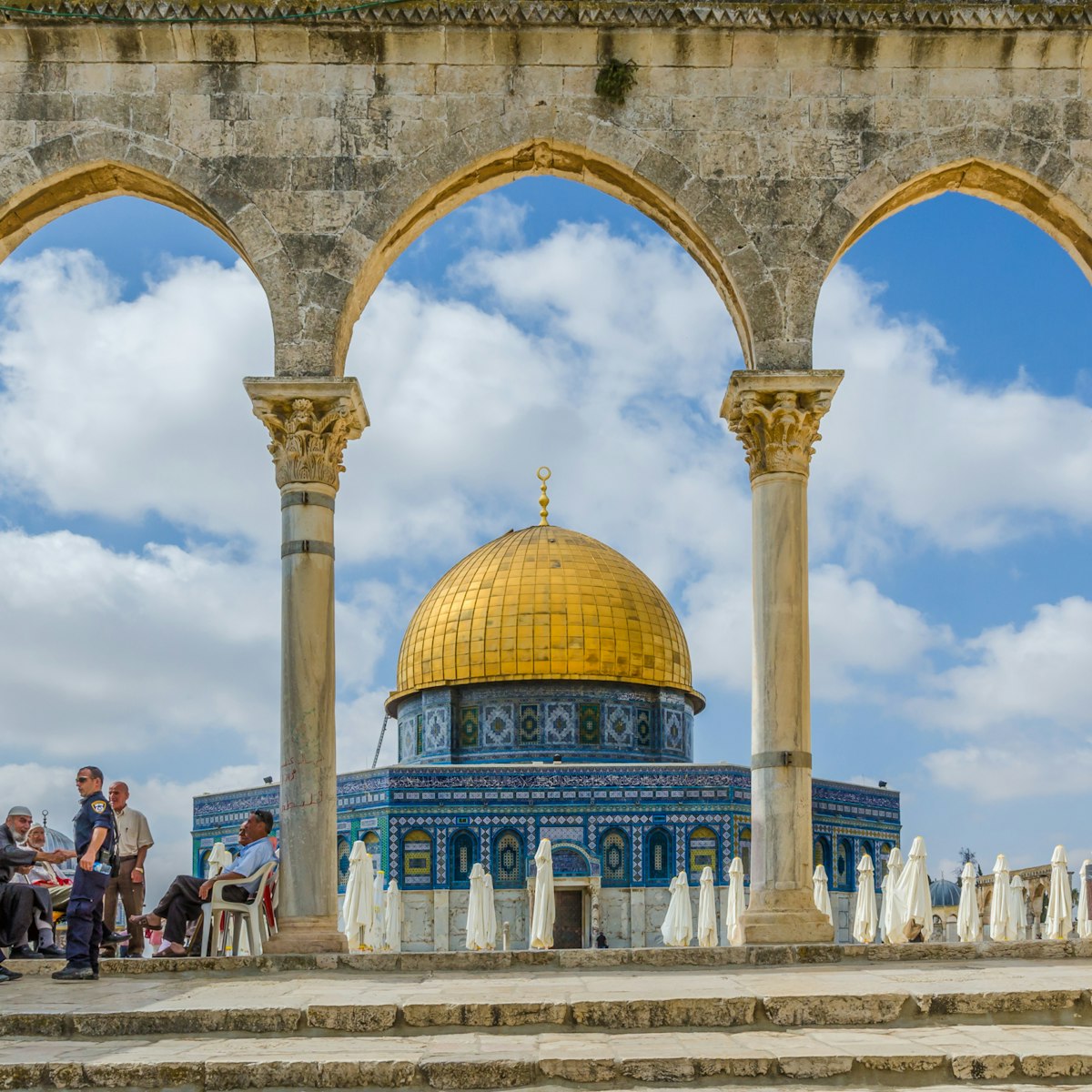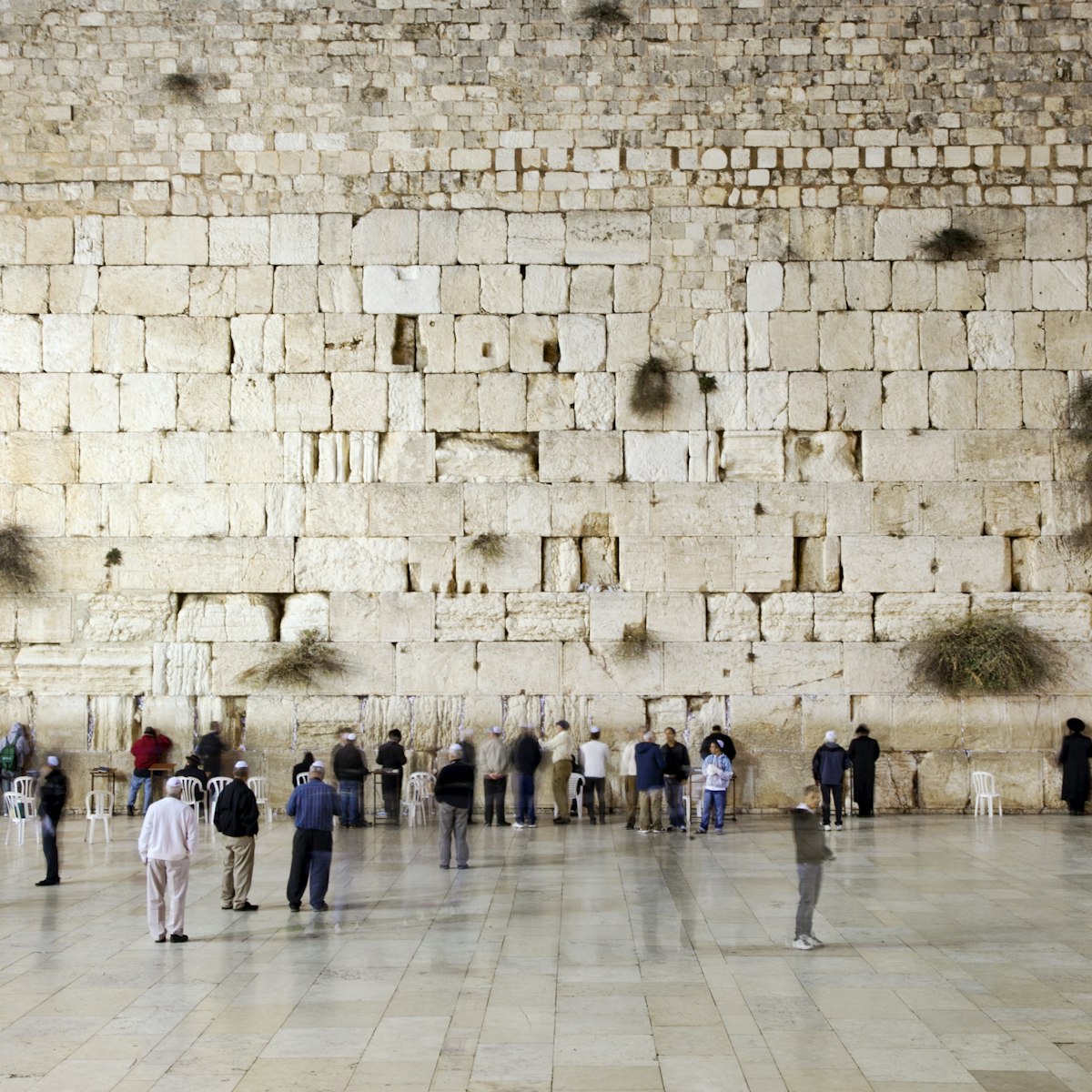The focal point of Hebron for most visitors is the Tomb of the Patriarchs (Cave of Machpelah), known to Muslims as Ibrahimi Mosque (Ibrahim is the Muslim name for Abraham). The site is sacred to both Muslims and Jews – be aware of the strict security and separate prayer spaces for each. When coming from the Old City, you will need to pass through an Israeli checkpoint and show your passport.
Looking rather like decorated tents, the mostly Mamluk-era cenotaphs commemorate the patriarchs Abraham, Isaac and Jacob, and their wives, but it’s the cave below that both Jews and Muslims believe was chosen by Abraham as the actual final resting place of his family.
You can peer into the cave through a metal grate in the corner of the mosque. As you walk into the room that allows viewing of the cenotaph of Abraham, note the small niche near the door where you can see a footprint. The Muslims believe this to be Muhammad's footprint, while Jews believe it was created by Adam.
Built by Herod (notice the Herodian stones at the base of the walls), the complex was altered by the Byzantines in the 6th century – they added a church, beside which a synagogue was built. When the Arabs conquered the area in the following century, the church was converted to a mosque, but the synagogue remained intact. After the Crusaders left the scene, the Mamluks built another mosque.
When entering the mosque, you will be asked to remove your shoes, and women will be handed a head covering. When entering the synagogue, men will be offered kippas and women a scarf to cover their shoulders.







